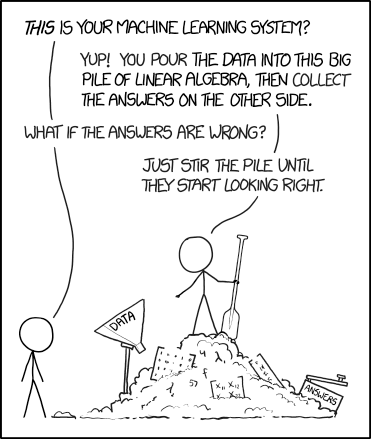Introduction to forecasting
Nowcasting and forecasting of infectious disease dynamics
Forecasting in infectious disease epidemiology
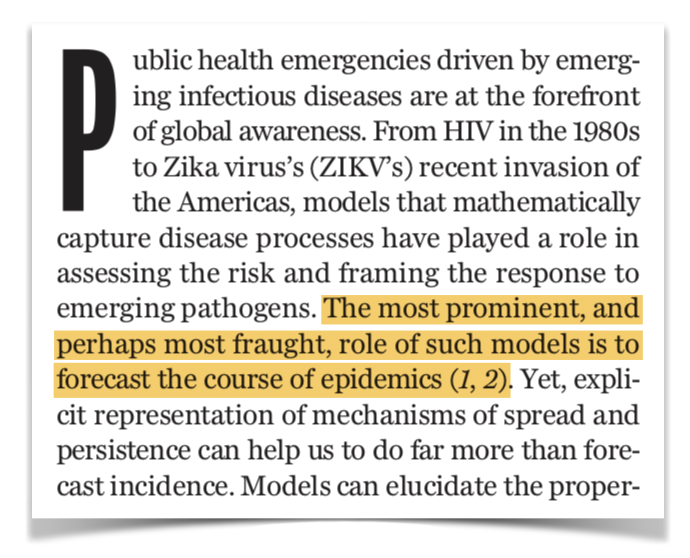
Modelling the future can help with …
… decision making
- how many beds do we need?
- where should we allocate vaccines?
- where should we trial vaccines?
…situational awareness
- nowcast: where are we now?
- forecast: where are we heading?
Warning
But…
- not all modelling is prediction
- not all modelling of the future is forecasting
Different ways of modelling the future
Nowcasts make statements about current trends based on partial data
Forecasts are unconditional statements about the future: what will happen
Scenarios state what would happen under certain conditions
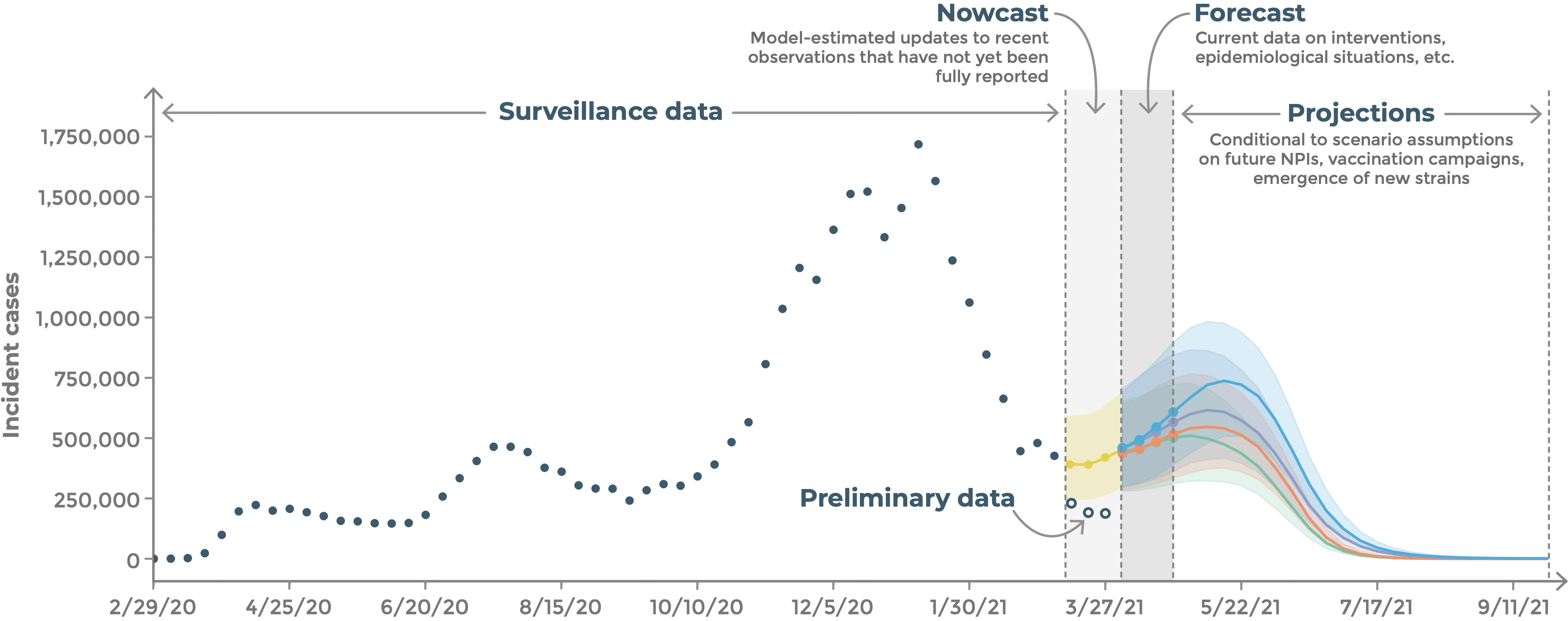
Figure credit: Scenario Modeling Hub
CDC use of influenza forecasts
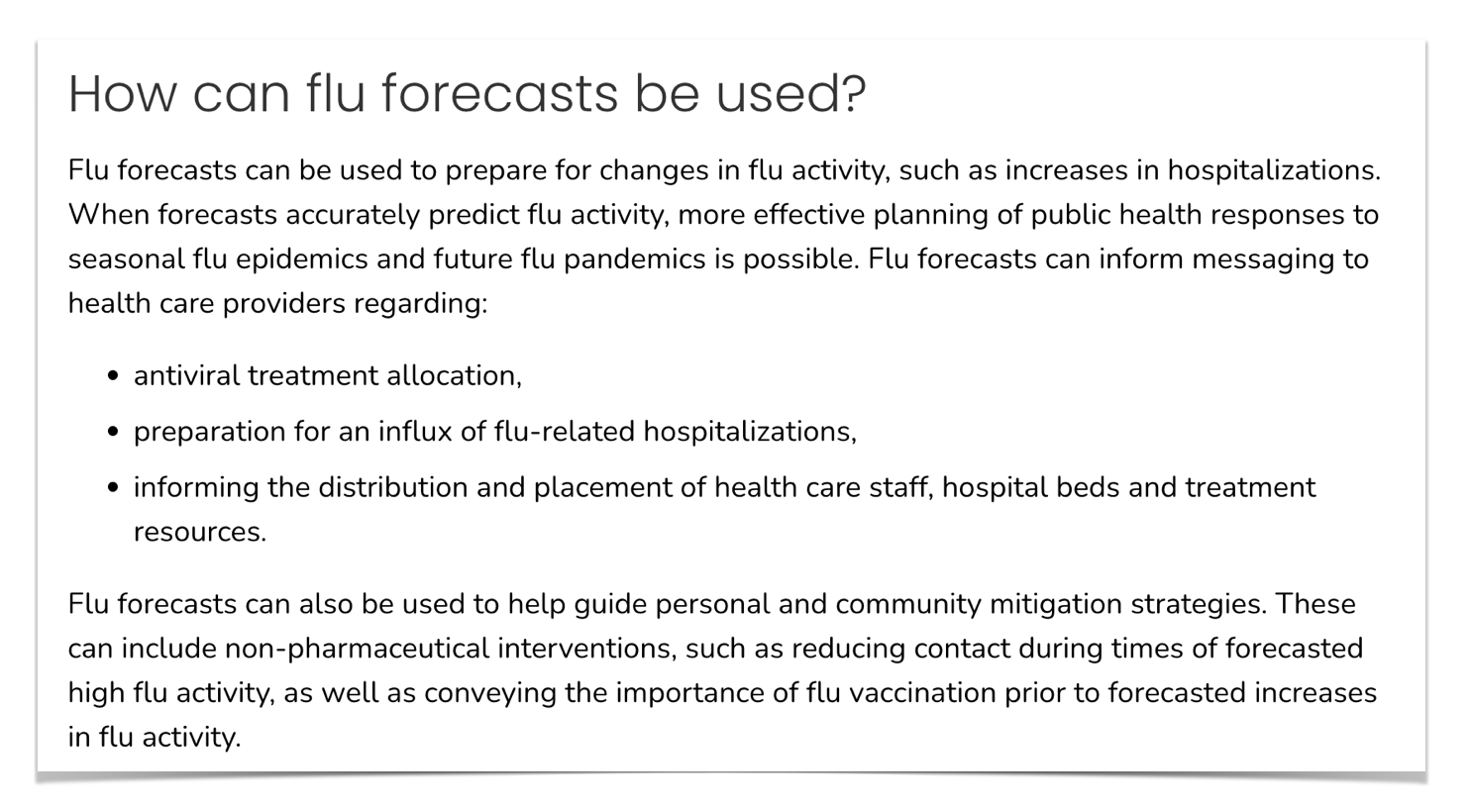
Forecasting: relationship with \(R_t\) estimation
- In infectious disease epidemiology, many relevant interventions and other changes affect the strength of transmission
- Things that affect transmission don’t affect the predicted outcomes directly, but via \(R_t\)
- In that sense, predicting infections comes down to predicting \(R_t\)
- Commonly, forecast models assume no change in \(R_t\). Is this a good assumption?
Forecasting: relationship with nowcasting
- Nowcast: we have some data from the dates we’re predicting
- Forecast: we have no data from the dates we’re predicting (usually b/c they’re in the future)

Figure credit: Scenario Modeling Hub
Forecasts are often probabilistic
- Because the future is uncertain, it is natural to express predictions in probabilities, e.g. there is a X% chance of exceeding Y hospital admissions.
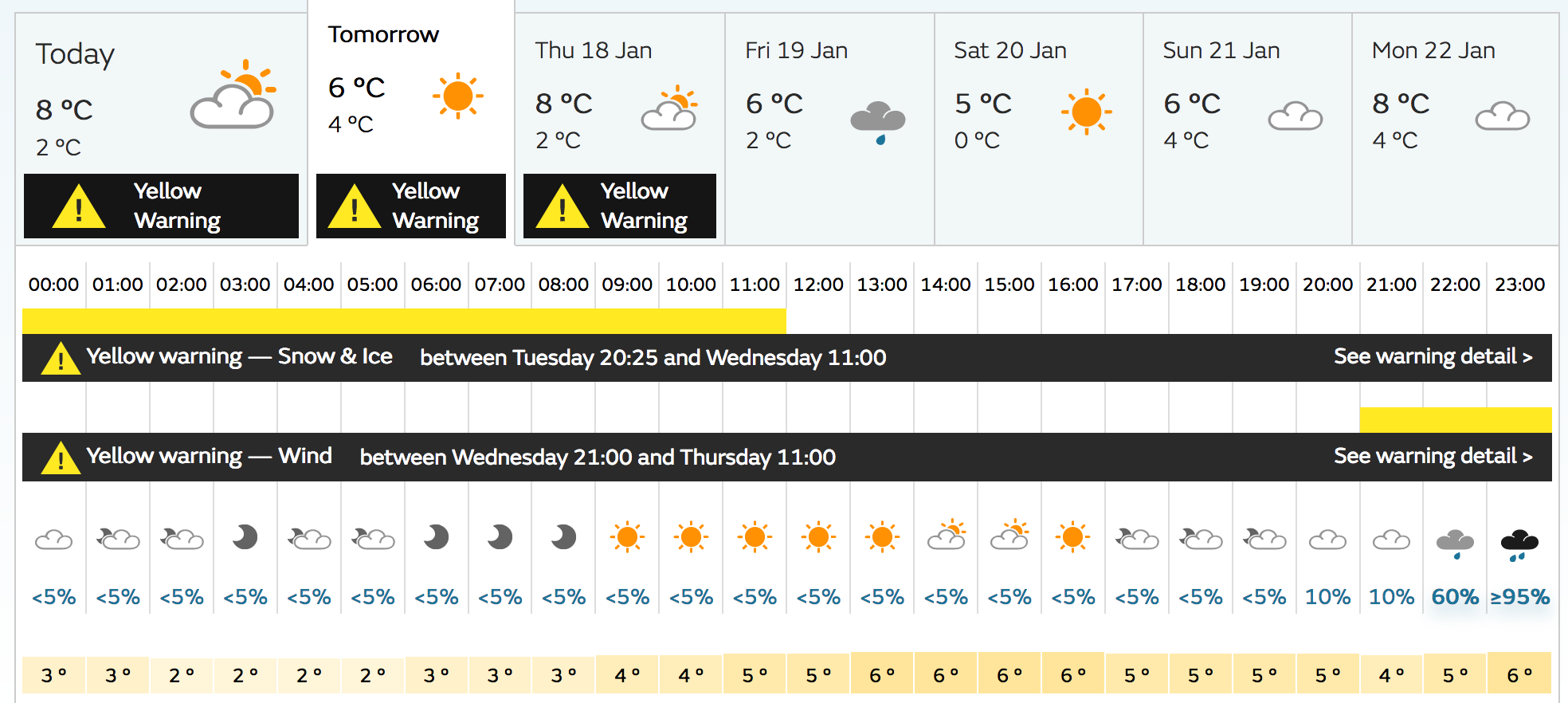
Probabilistic epi forecasts
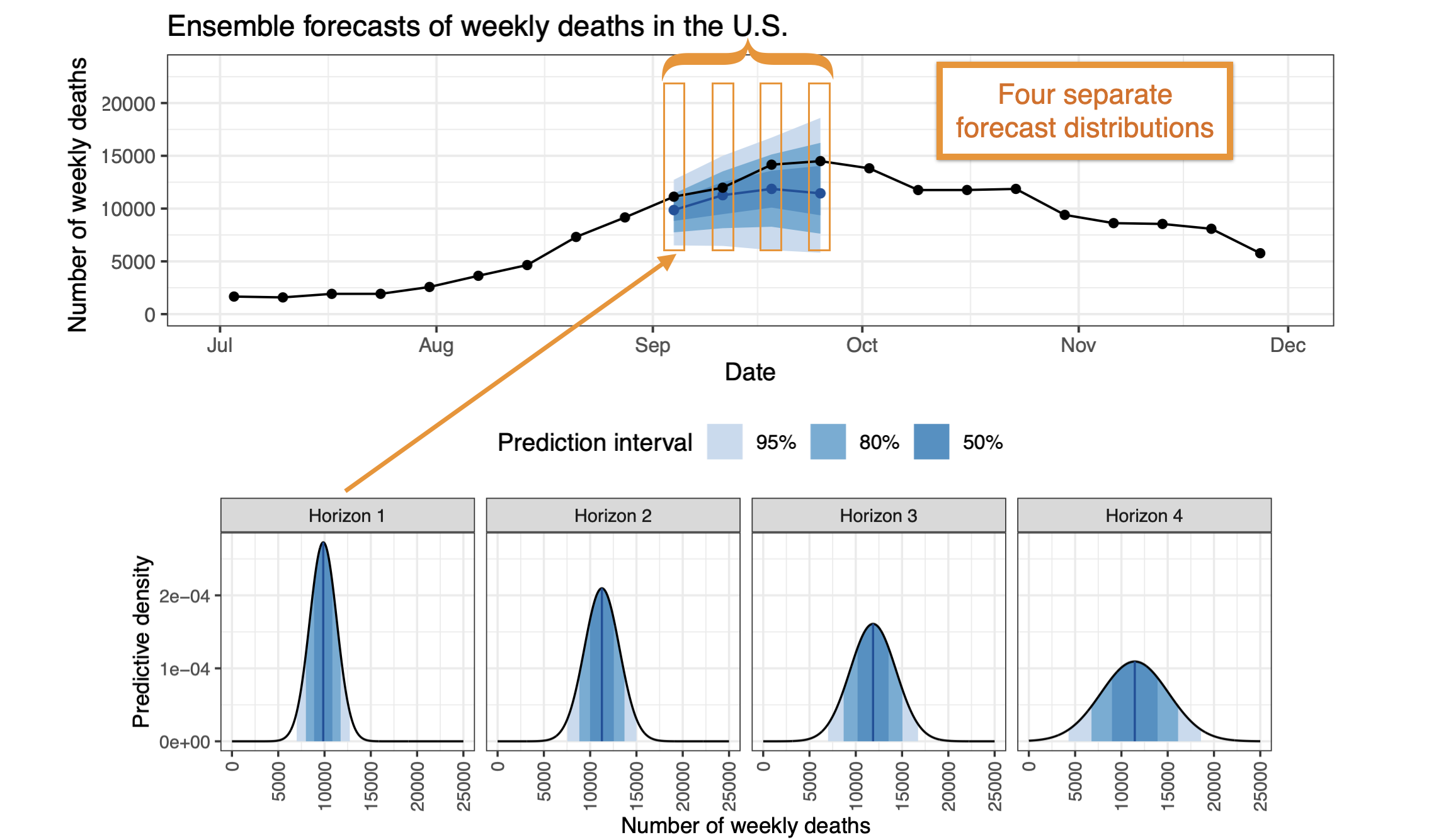
Figure credit: Evan Ray
The epi forecasting philosophical debate
Camp A
“It’s a machine learning problem! We can gather enough data to make good predictions, and we don’t really have to understand the underlying processes that well.”
Camp B
“We have clear theory that explains transmission of pathogens in a networked population. I don’t need to confront my model’s statements with data.”
What camp are you in?
Exhibit from Camp A:
Your Turn
- Learn about and explore seasonal influenza-like illness data from US CDC.
- Build a simple forecast model and understand how it is represented in R.
Introduction to forecasting
